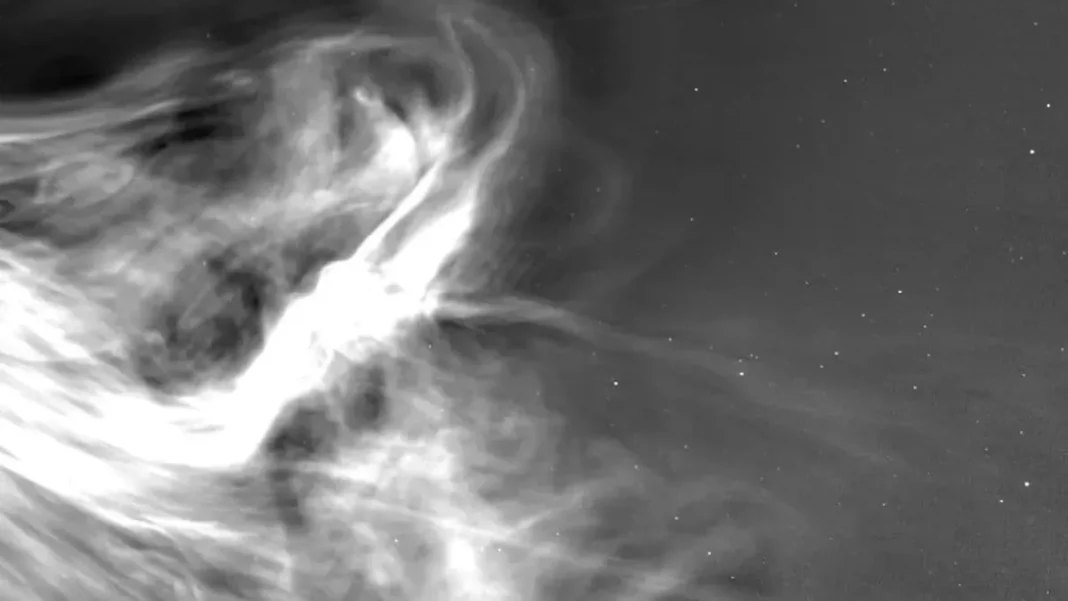NASA’s Parker Solar Probe has made history by capturing the closest-ever images of the Sun, giving us a glimpse into the mysteries of our star. In December 2024, the probe reached a distance of just 3.8 million miles from the Sun’s surface, breaking its own record of 15 million miles set in 2018. This achievement has opened up a new chapter in our understanding of the Sun and its impact on our planet.
The images, taken by the Wide-field Imager for Solar Probe (WISPR) instrument, reveal unprecedented details of the Sun’s corona, solar wind, and coronal mass ejections (CMEs). These are crucial components of the Sun that play a major role in shaping the space weather around our planet. The WISPR images have provided scientists with a wealth of information that will greatly improve our ability to forecast space weather and understand its effects on Earth.
The corona, the outermost layer of the Sun’s atmosphere, is usually hidden from view due to the Sun’s intense brightness. However, the WISPR instrument has been able to capture images of the corona in incredible detail, showing us the intricate structures and dynamics of this region. These images will help scientists study the corona and its role in the Sun’s energy output, which is vital for understanding the Sun’s influence on Earth’s climate.
The solar wind, a stream of charged particles that constantly flows from the Sun, is also visible in the WISPR images. This wind interacts with Earth’s magnetic field, causing phenomena such as the aurora borealis. By studying the solar wind, scientists can better predict and prepare for potential disruptions to our communication and navigation systems caused by space weather.
One of the most exciting findings from the WISPR images is the visualization of CME collisions. CMEs are massive eruptions of plasma and magnetic field from the Sun’s surface that can travel at speeds of over a million miles per hour. These eruptions can cause geomagnetic storms on Earth, which can disrupt satellite operations and power grids. The ability to observe CME collisions up close will help scientists understand the dynamics of these events and improve our prediction of their impacts on Earth.
The Parker Solar Probe, launched in 2018, is on a daring mission to explore the Sun’s atmosphere and gather data that will help us understand the fundamental processes that drive our star. The probe is equipped with a suite of instruments, including the WISPR, which are designed to withstand the extreme conditions near the Sun. The spacecraft will make a total of 24 close approaches to the Sun, with the final one expected to bring it within 3.83 million miles of the Sun’s surface in 2025.
The success of the Parker Solar Probe mission is a testament to the ingenuity and perseverance of NASA’s scientists and engineers. This mission has pushed the boundaries of our technological capabilities and has provided us with a wealth of data that will keep scientists busy for years to come. The WISPR images have already revealed new insights into the Sun’s complex and dynamic nature, and we can only imagine what other discoveries await us as the probe continues its journey.
The information gathered by the Parker Solar Probe will not only improve our understanding of the Sun, but it will also help us protect our planet from the effects of space weather. With the increasing reliance on technology in our daily lives, the need for accurate space weather forecasting has never been greater. The WISPR images have already shown us that the Sun is a dynamic and ever-changing entity, and with the data from the Parker Solar Probe, we will be able to better predict and prepare for its effects on Earth.
In conclusion, NASA’s Parker Solar Probe has achieved a remarkable milestone by capturing the closest-ever images of the Sun. These WISPR images have provided us with unprecedented details of the corona, solar wind, and CME collisions, which will greatly improve our ability to forecast space weather and understand its impacts on our planet. This groundbreaking mission is a testament to human curiosity and our determination to unravel the mysteries of the universe. As the Parker Solar Probe continues its journey, we can look forward to many more exciting discoveries and advancements in our understanding of the Sun.


